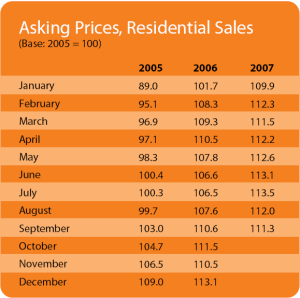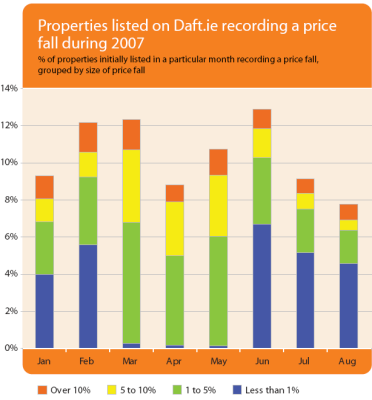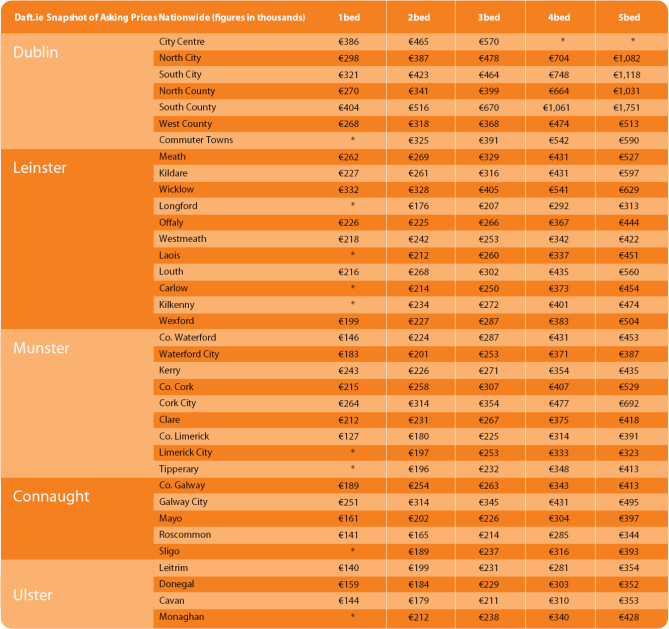Migration the joker in the housing market pack
Daft Reports
- Ronan Lyons (House Price, Q1 2024)
- Ronan Lyons (Rental Price, Q4 2023)
- Ronan Lyons (House Price, Q4 2023)
- Ronan Lyons (Rental Price, Q3 2023)
- Ronan Lyons (House Price, Q3 2023)
- Ronan Lyons (Rental Price, Q2 2023)
- Ronan Lyons (House Price, Q2 2023)
- Ronan Lyons (Rental Price, Q1 2023)
- Ronan Lyons (House Price, Q1 2023)
- Ronan Lyons (Rental Price, Q4 2022)
- Ronan Lyons (House Price, Q4 2022)
- Ronan Lyons (Rental Price, Q3 2022)
- Ronan Lyons (House Price, Q3 2022)
- Ronan Lyons (Rental Price, Q2 2022)
- Ronan Lyons (House Price, Q2 2022)
- Ronan Lyons (Rental Price, Q1 2022)
- Ronan Lyons (House Price, Q1 2022)
- Ronan Lyons (Rental, Q4 2021)
- Ronan Lyons (House Price, Q4 2021)
- Ronan Lyons (Rental, Q3 2021)
- Ronan Lyons (House Price, Q3 2021)
- Ronan Lyons (Rental, Q2 2021)
- Ronan Lyons (House Price, Q2 2021)
- Ronan Lyons (Rental, Q1 2021)
- Ronan Lyons (House Price, Q1 2021)
- Ronan Lyons (Rental, Q4 2020)
- Ronan Lyons (House Price, Q4 2020)
- Ronan Lyons (Wealth, H2 2020)
- Ronan Lyons (Rental, Q3 2020)
- Ronan Lyons (House Price, Q3 2020)
- Ronan Lyons (Housing, July 2020)
- Ronan Lyons (Housing, June 2020)
- Ronan Lyons (Housing, May 2020)
- Ronan Lyons (Rental, Q1 2020)
- Ronan Lyons (House Price, Q1 2020)
- Ronan Lyons (Rental, Q4 2019)
- Ronan Lyons (House Price, Q4 2019)
- Ronan Lyons (Wealth, H2 2019)
- Ronan Lyons (Rental, Q3 2019)
- Ronan Lyons (House Price, Q3 2019)
- Pierre Yimbog (Rental, Q2 2019)
- Ronan Lyons (House Price, Q2 2019)
- Ronan Lyons (Wealth, H1 2019)
- Ronan Lyons (Rental, Q1 2019)
- Ronan Lyons (House Price, Q1 2019)
- Ronan Lyons (Rental, Q4 2018)
- Ronan Lyons (House Price, Q4 2018)
- Ronan Lyons (Wealth, H2 2018)
- Ronan Lyons (Rental, Q3 2018)
- Ronan Lyons (House Price, Q3 2018)
- Shane De Rís (Rental, Q2 2018)
- Ronan Lyons (House Price, Q2 2018)
- Ronan Lyons (Wealth, 2018)
- Ronan Lyons (Rental, Q1 2018)
- Ronan Lyons (House Price, Q1 2018)
- Ronan Lyons (Rental, Q4 2017)
- Ronan Lyons (House Price, Q4 2017)
- Ronan Lyons (Rental, Q3 2017)
- Ronan Lyons (House Price, Q3 2017)
- Katie Ascough (Rental, Q2 2017)
- Ronan Lyons (Wealth, 2017)
- Ronan Lyons (House Price, Q2 2017)
- Ronan Lyons (Rental, Q1 2017)
- Ronan Lyons (House Price, Q1 2017)
- Ronan Lyons (Rental, Q4 2016)
- Ronan Lyons (House Price, Q4 2016)
- Ronan Lyons (Rental, Q3 2016)
- Ronan Lyons (House Price, Q3 2016)
- Ronan Lyons (School Report, 2016)
- Conor Viscardi (Rental, Q2 2016)
- Ronan Lyons (Rail Report, 2016)
- Ronan Lyons (House Price, Q2 2016)
- Ronan Lyons (Rental, Q1 2016)
- Ronan Lyons (House Price, Q1 2016)
- Ronan Lyons (Rental, Q4 2015)
- Ronan Lyons (House Price, Q4 2015)
- Ronan Lyons (Rental, Q3 2015)
- Ronan Lyons (House Price, Q3 2015)
- Marcus O'Halloran (Rental, Q2 2015)
- Ronan Lyons (House Price, Q2 2015)
- Ronan Lyons (Rental, Q1 2015)
- Ronan Lyons (House Price, Q1 2015)
- Ronan Lyons (Rental, Q4 2014)
- Ronan Lyons (House Price, Q4 2014)
- Ronan Lyons (Rental, Q3 2014)
- Ronan Lyons (House Price, Q3 2014)
- Domhnall McGlacken-Byrne (Rental, Q2 2014)
- Ronan Lyons (House Price, Q2 2014)
- Ronan Lyons (Rental, Q1 2014)
- Ronan Lyons (House Price, Q1 2014)
- Ronan Lyons (Rental, Q4 2013)
- Ronan Lyons (House Price, Q4 2013)
- Ronan Lyons (Rental, Q3 2013)
- Ronan Lyons (House Price, Q3 2013)
- Ronan Lyons (Rental, Q2 2013)
- Ronan Lyons (House Price, Q2 2013)
- Ronan Lyons (Rental, Q1 2013)
- Ronan Lyons (House Price, Q1 2013)
- Ronan Lyons (Rental, Q4 2012)
- Ronan Lyons (House Price, Q4 2012)
- Lorcan Sirr (Rental, Q3 2012)
- Padraic Kenna (House Price, Q3 2012)
- John Logue (Rental, Q2 2012)
- Ronan Lyons (House Price, Q2 2012)
- Barry O'Leary (Rental, Q1 2012)
- Seamus Coffey (House Price, Q1 2012)
- Joan Burton (Rental, Q4 2011)
- Ronan Lyons (House Price, Q4 2011)
- Philip O'Sullivan (Rental, Q3 2011)
- Sheila O'Flanagan (House Price, Q3 2011)
- Rachel Breslin (Rental, Q2 2011)
- Constantin Gurdgiev (House Price, Q2 2011)
- Cormac Lucey (Rental, Q1 2011)
- Eoin Fahy (House Price, Q1 2011)
- Lorcan Roche Kelly (Rental, Q4 2010)
- Ronan Lyons (House Price, Q4 2010)
- John Fitzgerald (Rental, Q3 2010)
- Patrick Koucheravy (House Price, Q3 2010)
- Gary Redmond (Rental, Q2 2010)
- Jim Power (House Price, Q2 2010)
- Jill Kerby (Rental, Q1 2010)
- Brian Lucey (House Price, Q1 2010)
- Michael Taft (Rental, Q4 2009)
- Alan McQuaid (House Price, Q4 2009)
- Dr. Charles J. Larkin (Rental, Q3 2009)
- Emer O'Siochru (House Price, Q3 2009)
- Ronan Lyons (Rental, Q2 2009)
- Oliver Gilvarry (House Price, Q2 2009)
- Brian Devine (Rental, Q1 2009)
- Dr. Liam Delaney (House Price, Q1 2009)
- Gerard O'Neill (Rental, Q4 2008)
- Ronan Lyons (House Price, Q4 2008)
- Dr. Stephen Kinsella (Rental, Q3 2008)
- Moore McDowell (House Price, Q3 2008)
- Shane Kelly (Rental, Q2 2008)
- Fergal O'Brien (House Price, Q2 2008)
- Eoin O'Sullivan (Rental, Q1 2008)
- Dermot O'Leary (House Price, Q1 2008)
- Dan O'Brien (Rental, Q4 2007)
- Frances Ruane (House Price, Q4 2007)
- John McCartney (Rental, Q3 2007)
- Ronnie O'Toole (House Price, Q3 2007)
- Ronan Lyons (Rental, Q2 2007)
- Constantin Gurdgiev (House Price, Q2 2007)
- Fintan McNamara (Rental, Q1 2007)
- Rossa White (House Price, Q1 2007)
- Geoff Tucker (Rental, Q4 2006)
- Damien Kiberd (House Price, Q4 2006)
- Pat McArdle (House Price, Q3 2006)
- Marc Coleman (House Price, Q2 2006)
- David Duffy (House Price, Q1 2006)
- Austin Hughes (House Price, Q4 2005)
- David McWilliams (House Price, Q2 2005)

17th Oct 2007
Ronnie O'Toole is our guest blogger, commenting on the latest Daft research on the Irish property market.
Some cad has to be the first to predict the onset of Christmas, so it may as well be me. And as the year draws to a close, naturally we start consigning our memories of the property market in 2007 to the green wheelie bin of the data archive, and start looking in wide-eyed wonder at the glittering package that is 2008.
2007 will not be remembered fondly. The Daft Asking Price Index for Q3 2007 shows that house prices have been marking time all year. The index for September shows that prices have eased back 2% since July, undoing the earlier modest gains. On a 12 month basis, asking prices are more or less where they were this time last year.
So will 2008 be a year of unrestrained joy, or will it usher a widespread gnashing of teeth? In the market for an asset such as housing, short run prices will always be sensitive to the whims of consumer sentiment. On this score, there is plenty of evidence in the Daft analysis that consumers continue to sit on the fence. Of properties initially listed in January, almost 1 in 5 is still on the market. This has forced many buyers to push down prices. About 10% of properties posted in 2007 have had their price reduced.
However, like anything that is freely bought and sold, the invisible hand of market competition is busy guiding house prices. It is content to do so quietly, gently nudging prices rather than dragging them back to fundamentals by the scruff every quarter. With an emerging consensus that supply will fall to 50,000 per annum over the next few years, attention must now turn to what is likely to happen housing demand.
In trying to predict long term housing demand, the joker in the pack is immigration. Assuming zero net immigration, we will probably need 38,000 homes to be built over the next number of years. If immigration runs at the high levels witnessed in 2006, then we may need more than 66,000 homes.
The implication for house prices follows from this. If we continually build 50,000 units, but only need 38,000, then house prices will struggle to re-gain momentum. If on the other hand .... well, you get the idea.
Where will immigration go from here? Welcome to the world of pure speculation, where my comparative advantage as an economist over you, the interested punter, more or less vanishes. This intellectual no-man's land has left space for a raft of commentators to start speculating on where migration is going.
The dominant stream of speculation doing the rounds is the 'frontier' paradigm. By this reasoning, the wave of new settlers from Eastern Europe that have set up camp in the Wily West that is Ireland have largely been employed in building this new world. By this theory, as soon as construction weakens, these new settlers will up-sticks and head home. This reduction of net immigration to a trickle will serve to further deepen the slowdown in construction and house prices. For example, the ESRI has predicted net immigration will fall from over 70,000 in 2007 to 25,000 next year.
I believe this will prove to be overly pessimistic. While it is true that construction has been an important source of employment for our Eastern friends, it is not as important as some would have you believe. Figures from the 2006 Census show that 18% of Eastern Europeans in Ireland work on building sites, only double the national average.
The other 82% are in a wide array of other jobs, mostly the jobs the locals don't want to do. They work as childminders, shop assistants, and security guards. They are cleaning our offices, processing cattle in our abattoirs and picking vegetables on our farms.
While Eastern Europeans will no longer find jobs readily available in construction, other occupations will show continued increases in demand. For example, rising female participation will continue to drive the demand for childcare workers.
So, immigration will not fall off sharply due to the fall in house construction. It will gradually reduce, however, though not because of what is happening in Ireland. To understand why, we have to look back to the source.
Take Poland. Unemployment there has fallen from 20% in 2002 to 12% in 2007 on the back of strong economic growth. Poland's Deputy Labour Minister Halina Olendzka recently predicted that the jobless rate would fall below 7% by the end of 2008. Events in Poland reflect a broader reality - the well of cheap migrants is starting to dry up. The labour market in 'old Europe' has also improved considerably, so migrants increasingly have a choice of countries in which to sell their labour.
What impact will this have on the housing market? House demand will gradually fall off in tandem with slower inwards migration, though will remain at levels that look high relative to historical experience. Rents are likely to remain strong, and the shift towards buy-to-let from owner occupancy will continue.
Importantly, the fact that this will happen gradually will allow the wider construction industry to accurately predict the future demand for housing, and to adjust their plans accordingly. There will be no unexpected collapse in migration that may have tipped house prices over the edge.
Of course, all of this speculation is subject to the not inconsiderable caveat that none of us really know what is happening with migrants. Is there any prediction I am 100% certain of? Short of the onset of Christmas, not really.
HIGHLIGHTS:

Daft Asking Price Index (API)

Properties listed on Daft.ie recording a price fall during 2007
SNAPSHOT:

Average House Prices across Ireland in Q3 2007
